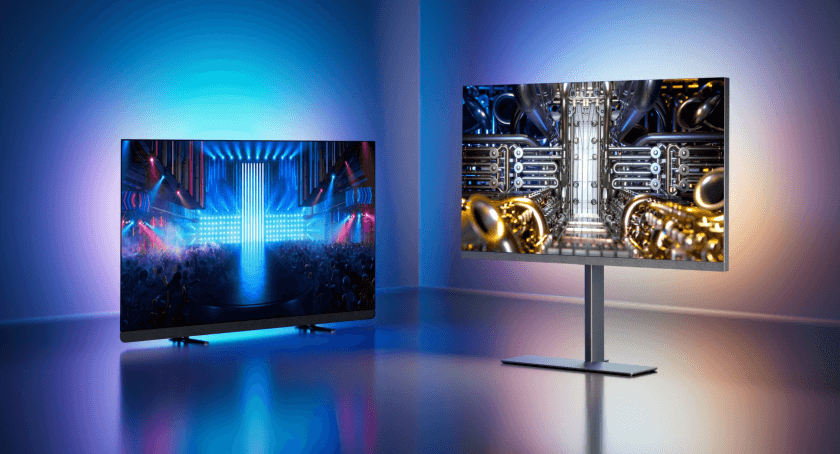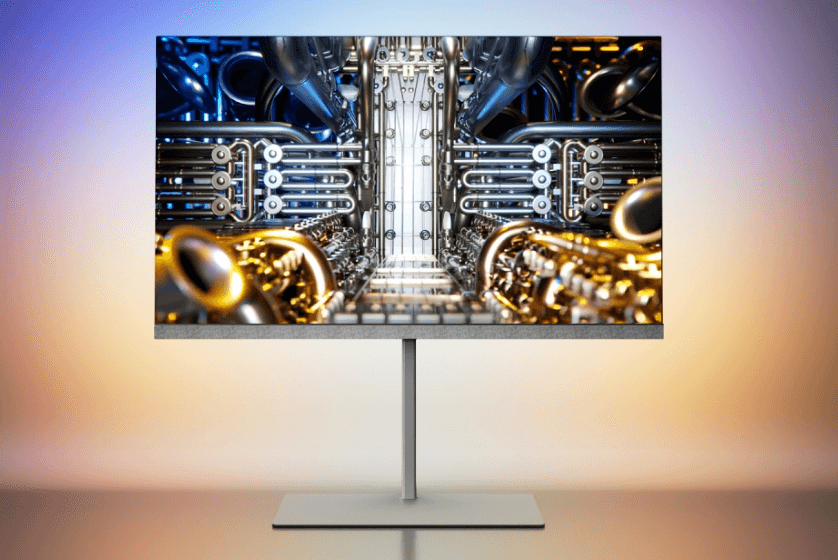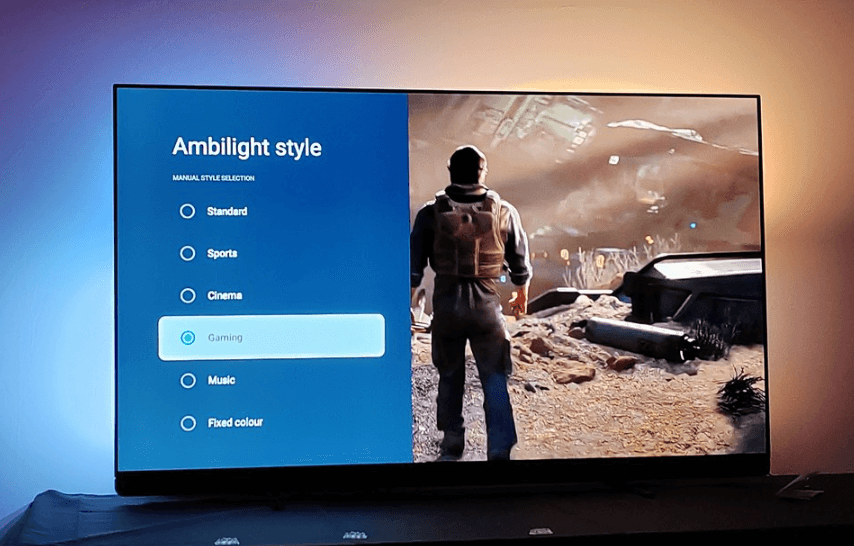
TP Vision, the company behind the Philips TV brand, said this week it’s about to launch the final, and best OLED TV in its 2024 lineup with the imminent arrival of the Philips OLED+959, which coincides with the 20th anniversary of its iconic Ambilight technology.
The flagship model in this year’s Philips OLED TV range, the OLED+959 is available in a single size of 65-inches and features a second-generation Micro Lens Array panel that’s able to boost brightness to a whopping 3,000 nits, meaning it will compete with some of the best models on the market – such as the LG G4, the Samsung S95D and the previously released Philips OLED+909, which features the same panel.
As a high-end model, it supports all of the major HDR formats, including Dolby Vision, HDR10+, HDR10 and HLG, and it features a built-in floor stand. The MLA panel is said to max out at a blazing-fast 144Hz refresh rate, and it supports HDMI 2.1 features such as VRR and ALLM, as well as Dolby Vision Gaming, a capability currently limited to Xbox Series X games only.
Featuring Philips’ most powerful 8th Gen P5 AI Dual Engine chipset, the OLED+959 comes with a number of AI capabilities, including Ambient Intelligence V3, a new AI Machine Learn Sharpness V2 system and Smart Bit Enhancement algorithm.
Ambient Intelligence V3 is said to optimise HDR performance so that it is perfectly in sync with the ambient light in the living room, delivering more clarity to the on-screen details, even in bright viewing conditions and darker rooms. It also helps to enhance contrast in real-time, matching the display’s light output to eliminate the effects of clipping in brighter scenes, the company said.
AI Machine Learn Sharpness is said to work hand-in-hand with the Smart Bit Enhancement algorithm to boost detail and realism, with the latter algorithm helping to boost 8-bit video to 14-bit precision, the company promised. This is meant to fix artefacts that appear in low-resolution content, without losing any of the finer details.
There’s a new and improved Ambilight system onboard too, which Philips says is the company’s most illuminating so far. It’s an advanced, four-sided Ambilight Plus system that projects the on-screen images onto the wall behind the TV more accuracy. It’s equipped with 192 lighting zones, with higher resolution and advanced motion tracking that helps to make the system more dynamic and accurate than earlier versions.

The sound system hasn’t been neglected either. Once again, Philips has partnered with Bowers & Wilkins to embed a powerful 5.1.2 channel sound system into the TV, with 18 drivers in total, including dedicated front, left and right channels made up of 30x50mm midrange drivers. It also includes up-firing speakers to create immersive, Dolby Atmos-style surround sound effects.
Also included in the sound system is a rear-mounted 75mm subwoofer that’s supported by two pairs of 45x65mm passive radiators, making it one of the most comprehensive audio systems ever seen integrated with a TV. Its capabilities can be extended further, with users able to add an external subwoofer to provide deeper bass, as well as external speakers to enhance the surround effects. The system is backed by 12 channels of amplification for a total power rating of 102-watts.
All of these features make the Philip OLED+959 one of the best TVs for video games fans ever launched, and to emphasise this the company points to its Game Bar feature, which instantly detects when a console or PC is hooked up to switch to a dedicated gaming mode.
The OLED+959 is notable for its extremely low response time of just 5 milliseconds on a 120Hz input and 13ms for a 60Hz input, thanks to its low-latency MEMC capability. When the Game Bar is activated, it automatically enables capabilities like VRR and ALLM and 4K/144Hz Dolby Vision Gaming for Xbox users.
In addition, the Game Bar, which is also found on the Philips OLED+909 and OLED809 TVs that launched earlier this year, makes it possible for gamers to personalise settings for the picture, sound and Ambilight to further enhance the gaming experience.

There are also five special enhancements unique to the Philips OLED+959, including a Crosshair capability that makes it possible to overlay a dot or intersecting lines over the game graphics to assist with aiming in shooting games, and a Centre Zoom feature for zooming into the central part of the game, increasing visibility.
Other enhancements include a Colour Filter tool for selecting or limiting the range of colours displayed on screen, enabling more focused gameplay; a Shadow Enhancer tool for adjusting the black levels to increase detail visibility; and an Edge Enhancer for enhancing the edges of objects within games, making them stand out better in busy games.
Philips said the Crosshair, Shadow Enhancer and Colour Filter enhancements can also be found on the Philips OLED+909 and OLED809 TVs, though they lack the Centre Zoom and Edge Enhancer capabilities.
The Philips OLED+909 is going on sale later this month and can be ordered now at stores including Richer Sounds for £3,999. That’s quite a bit more expensive than the Philips OLED+909, which retails at £2,799, and the Philips OLED809, on sale for just £2,099.